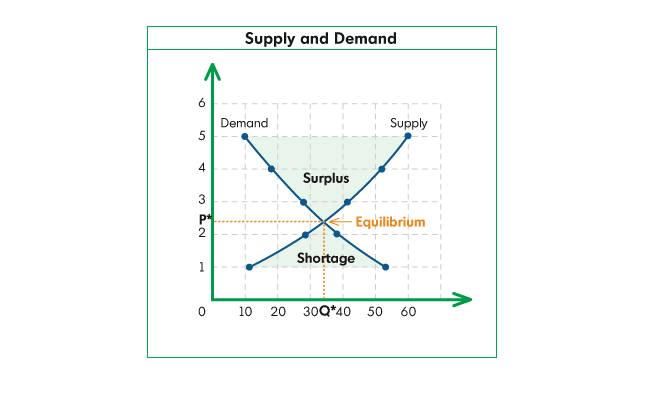The Milenomics Law of Supply and Demand: The supply of miles you have should as closely as possible match the demand you have for travel.
Today we learn more about the Milenomics Law of Supply and Demand. The law states that you should have a supply of miles that closely matches your demand for miles. When you don’t match supply and demand you either end up wasting money, or running out of miles. The best way for me to explain it is to show you what happens when you’re out of equilibrium between supply and demand.
Example 1: Too much supply (surplus)
Lets say you’re going all out–earning as much as you can with Milenomics Mileage Runs, and credit card signups. You’ve got miles in every program, and tons of them. As your mileage totals grow you break 100,000 across the 4 major US carriers (AA, UA, DL, US). Then 200,000 in each. You’re closing in on 1,000,000 total miles across all programs. How exciting!
But you’ve neglected the importance of your travel demands. If you’re really only flying a few times a year do you need 200,000 miles in 4 different programs? Probably not. The remaining miles are wasted. If you think back to our Mileage cost tracking spreadsheet, those miles have a real cost to them. Miles unused represent wasted money, or rather, money that could have been spent on hotels/things to do. Don’t earn miles to only let them sit and gather dust.
The recent AA award Fuel surcharge scare allowed us to see the danger in holding miles; overnight they can become worth much, much less. Instead of holding miles you should attempt to manage you demand better.
Example 2: Too much demand (shortage)
How many trips will you take this year? And where? Knowing that information will help you in two ways. First, it will allow you to start searching early for award tickets, and keep an eye out for the routes and airlines that make the trip. Second, it will help you get a handle on how many miles you will need.
If you’re traveling once a month and flying overseas often you’re going to need a minimum of 75,000 miles per month. If you aren’t able to consistently generate those miles you’re going to end up either buying coach tickets (ugh), spending much more than usual to generate more miles, or not traveling.
How do we estimate demand?
Sit down and write out where you want to go, and when you want to go there for the next year. Look at some airline award charts and see what it costs to do so. For short distance domestic trips remember BA Avios can really pack a lot of value. For international trips remember yesterday’s post on how the lowest number of miles needed isn’t always best.
Now that you have a schedule of your demand, add it all up to get the totals you’ll need in each program and formulate your earning plan. Step 1 would definately be credit card signup bonuses. The easiest, and cheapest way to get them is to sign up for credit cards and meet the minimum spend to get bonuses.
This thread over at Flyertalk is always updated with the best possible credit card offers for Airline miles. Right now, focus on Airline miles cards–not hotel cards. Figure out how much spending you can do in a 3 month period, and plan to get cards that will allow you to inexpensively meet that spending threshold.
It is likely that you won’t meet your estimated demand for miles with just Credit card sign up bonuses, which is ok. Having a plan means you’ll be more focused, and won’t end up with miles you don’t need. Knowing your demand will allow you to plan your supply, and try to not have wasted miles sitting around doing nothing. You’ll also be able to plan your Milenomics Mileage Runs (MMRs) around your demand schedule so you’re earning the miles you need when you need them.
Don’t forget you can subscribe via email to the blog, or follow me on Twitter, @Milenomics. If you have any questions I’m here to help.
Note: I receive nothing from the credit card links in the above thread.





I love your unique take on travel reward points. Do you have a post or anything with your story/background and how you got into this?
Thanks Donnie. No background post yet–I’ve just been cranking out the Milenomics lessons and focusing on blog launch. I’ll look into it though, its a good idea.
Another great post!
cool analysis!
Ahh… this brings me back to biz school 🙂
If Sally has 400000 miles and her friend tommy has 20000 miles, tommy sits his ass in coach while Sally gets 130k miles worth of Caviar….Easy math! 🙂